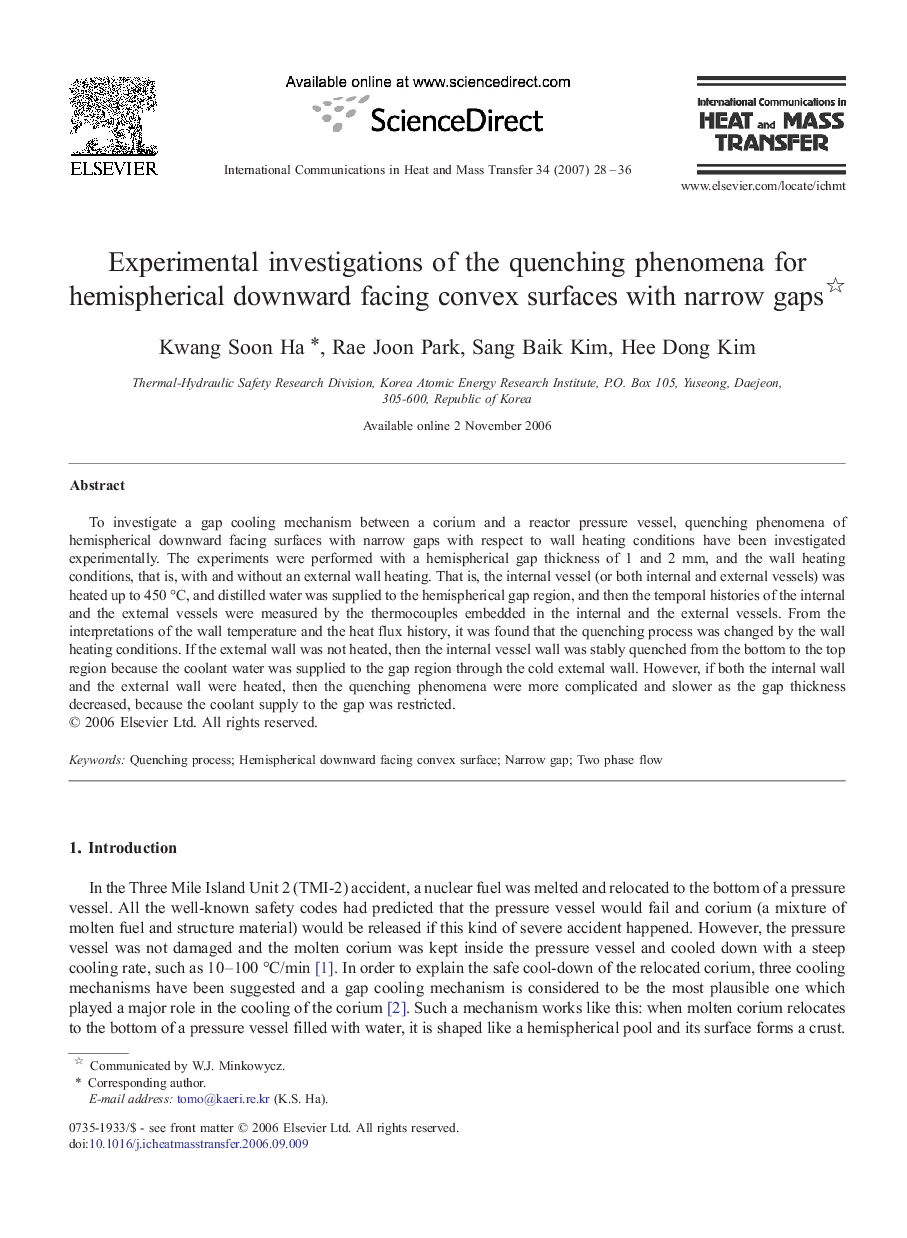| Article ID | Journal | Published Year | Pages | File Type |
|---|---|---|---|---|
| 654726 | International Communications in Heat and Mass Transfer | 2007 | 9 Pages |
To investigate a gap cooling mechanism between a corium and a reactor pressure vessel, quenching phenomena of hemispherical downward facing surfaces with narrow gaps with respect to wall heating conditions have been investigated experimentally. The experiments were performed with a hemispherical gap thickness of 1 and 2 mm, and the wall heating conditions, that is, with and without an external wall heating. That is, the internal vessel (or both internal and external vessels) was heated up to 450 °C, and distilled water was supplied to the hemispherical gap region, and then the temporal histories of the internal and the external vessels were measured by the thermocouples embedded in the internal and the external vessels. From the interpretations of the wall temperature and the heat flux history, it was found that the quenching process was changed by the wall heating conditions. If the external wall was not heated, then the internal vessel wall was stably quenched from the bottom to the top region because the coolant water was supplied to the gap region through the cold external wall. However, if both the internal wall and the external wall were heated, then the quenching phenomena were more complicated and slower as the gap thickness decreased, because the coolant supply to the gap was restricted.
